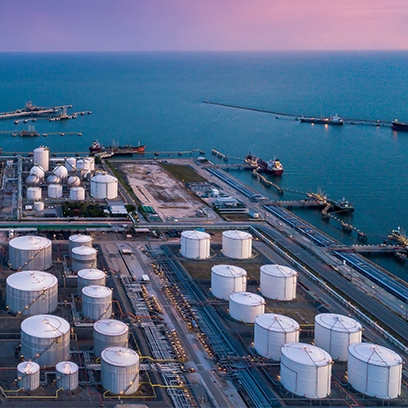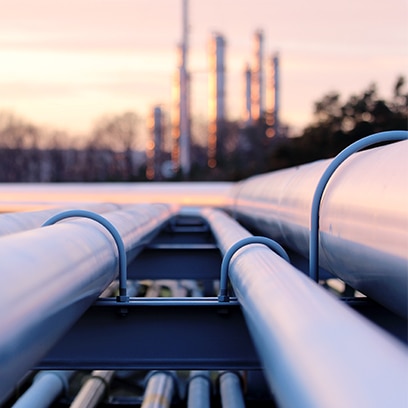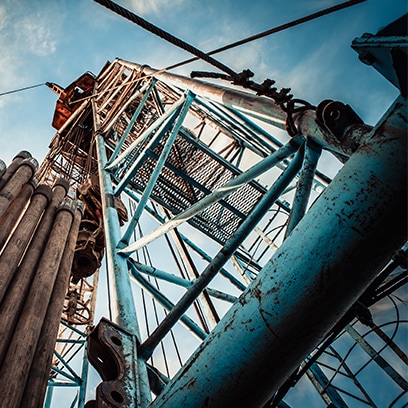
How is data science used in oil and gas?
Data science has been used in the oil gas industry for a long time to produce advanced analytics. The use cases for oil and gas analytics are numerous, and the large data lakes produced at all levels of the industry make the use of software such as Loamics DataCollect and Loamics DataLake necessary. Among these use cases three of them are encountered most frequently by oil gas companies and Loamics can help you with :

Maintain and increase the level of security during operations
With Loamics-AlgoEngine you can rely on your data analytics for oil and production data from gas companies to provide insights that improve the safety of all. It is common knowledge that oil and gas business, poses many safety risks to professionals of particular concern to those furthest upstream in the industry such as exploration or production.
Working on a well or in an oil and gas refinery is a dangerous job. Specialists in the industry are vital human resources for smooth operations.
It is therefore important to protect them as much as possible and even to anticipate the risks they may run on the operating sites. Data science allows the management of alert and reaction procedures that limit the damage incurred.

Improve and optimize maintenance procedures
The oil and gas industry involves many complex facilities that often operate 24/7. This level of utilization is difficult to manage while maintaining 100% efficiency. To get as close as possible, data analytics can be used to predict both the quantities required for production and the possible interruptions that could cut into your revenue. This predictive cause and effect analysis can be easily deployed with LOAMICS-AlgoEngine.
This can result in the implementation of a predictive maintenance system to limit the downtime of your facilities. By acquiring data from your IoT sensors with Loamics-DataCollect and storing it in the Loamics-DataLake, you have a complete resource of information that can be analyzed. Better safe than sorry, Big Data analytics allows you to predict untoward events that may lead to the suspension of your business activities.

Reduce production costs at all costs
While difficult to reduce the costs of a highly specialized workforce or of established and profitable installations, production costs must be optimized. With Loamics and data science, past data flowscan be used to gain insights into future production.
With LOAMICS-Suite totale, pipelines are also made of data. Big data tools use good and bad production experiences to anticipate market needs and fine tune production. When these two measures are taken together, revenues can be augmented and production costs drastically reduced.

How does big data analytics help the oil & gas industry?
For the oil and gas industry, data analysis helps to develop the strong potential that can only be revealed by fine and relevant analysis.
This is a business where misjudgments can be fatal.
Indeed, the consequences of bad evaluations can cause massive losses. The return on investment of an integrated tool like the Loamics-Suite is quickly reveald.
5 business areas of the oil and gas industry in particular can be helped using big data solutions :
By using the right algorithms with LOAMICS-AlgoEngine for analysis of transportation and production costs. The economic factors that will increase demand are mode easily determined. They can also be linked to certain weather phenomena. Scheduling the transportation of refined products and setting favorable prices for you and your customers is simplified.
By deploying the right sensors, collection of information with LOAMICS-DataCollect on wells can easily to draw up maps in 4 dimensions, the 3 spatial coordinates plus time. These sophisticated visualizations can not only be used for oil gas exploration at more profitable locations but can also be used to scrutinize reservoir capacities. Management of crude and refined product inventories more can be done finely to find optimal solutions to industry challenges.
On drilling sites, the more accurate the data, the higher the return on investment for the exploitation of potential wells. Moreover, the 4D mapping of prospective areas can also be used to predict the complexity of a drilling With LOAMICS-AlgoEngine, it is possible to anticipate the inevitable site drilling incidents.
Oil and gas equipment is increasingly equipped with all kinds of sensors. These sensors allow oil and gas data to be stored in LOAMICS-DataLake, which can be used to set up a proactive maintenance service. This is based on predictive analytics and maintenance based on machine learning. Extend uninterrupted drilling periods and reduce downtime to save money by avoiding frequent material breakdowns.
It is important to reduce emissions as much as possible with big data application to preserve the brand image of an entire industry. It is also a good way to make a positive commitment to the preservation of the environment. This is another area where analytics with the Loamics-Suite can provide valuable insights.
How can big data analytics benefit the oil and gas industry?
The oil and gas industry faces extremely specific challenges. Its business processes are complex, and it is difficult to take a long-term view of all operational activities. There is a continuous search for better performance using more and more sophisticated equipment. Supply chains and logistics are much more complex than in most other business sectors. In addition to these problems, environmental concerns have become a major preoccupation of the industry. By using the modules of the LOAMICS-Suite you can face these problems with peace of mind to maintain a good cruising speed for your activities. All three operational levels of the industry can benefit from the advantages of Big Data Analytics.

Upstream industry activities
The upstream activities of the oil gas industry are largely automated.
These are not only the extraction activities that benefit from some degree of robotization, but they are also heavily supervised especially for safety reasons.
Big Data analytics is mainly used to analyze the results of seismic activities. It is a mature data science process that makes it easier to prove the existence of resources in delineated areas.
Big Data analytics can also be used to optimize drilling phases by facilitating the deployment of predictive analysis models that will anticipate downtime due to equipment malfunction. The same is true for the design and use of raw product tanks.
Their supervision is performed in real time to maximize their performance as well as the return on investment related to their design.











